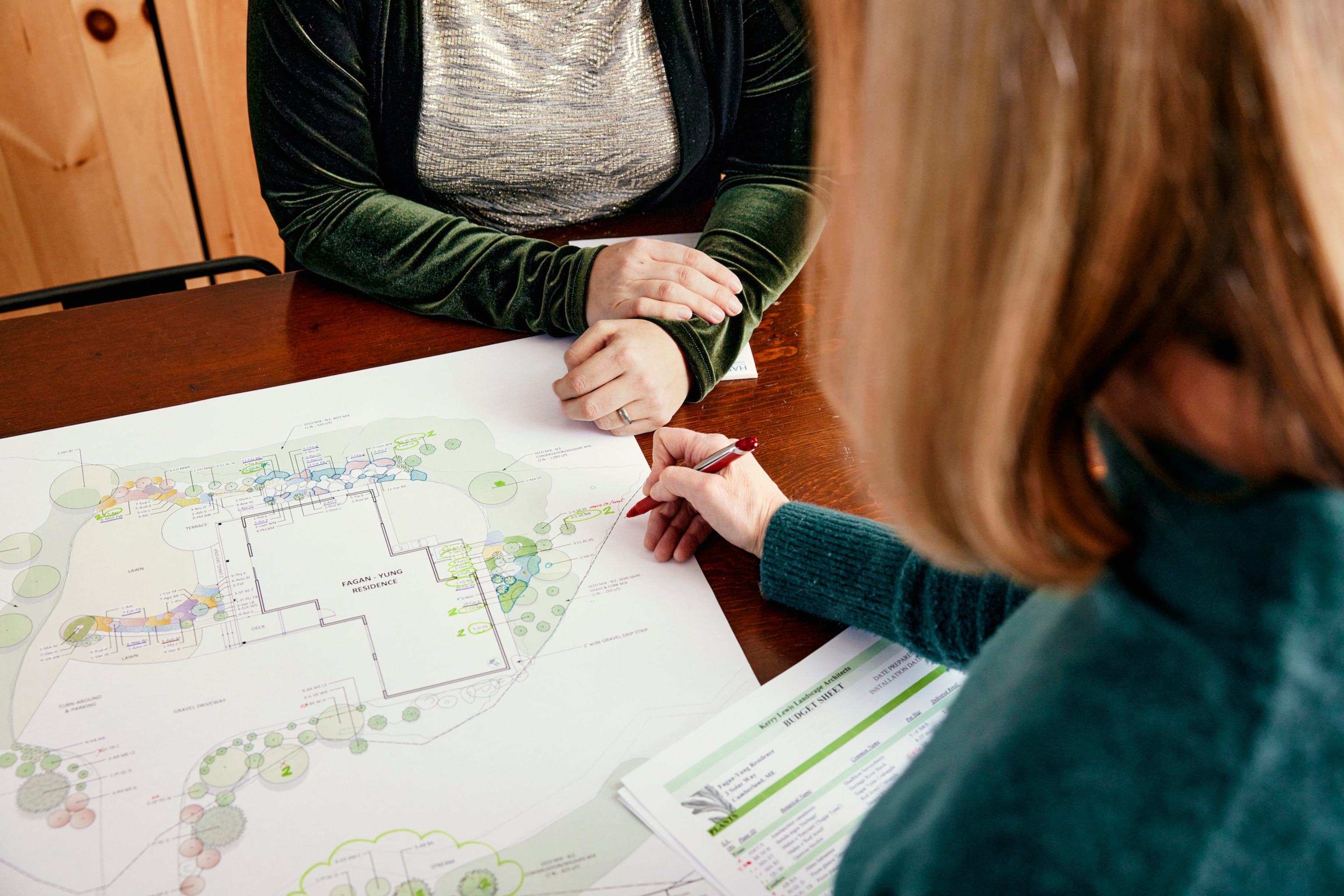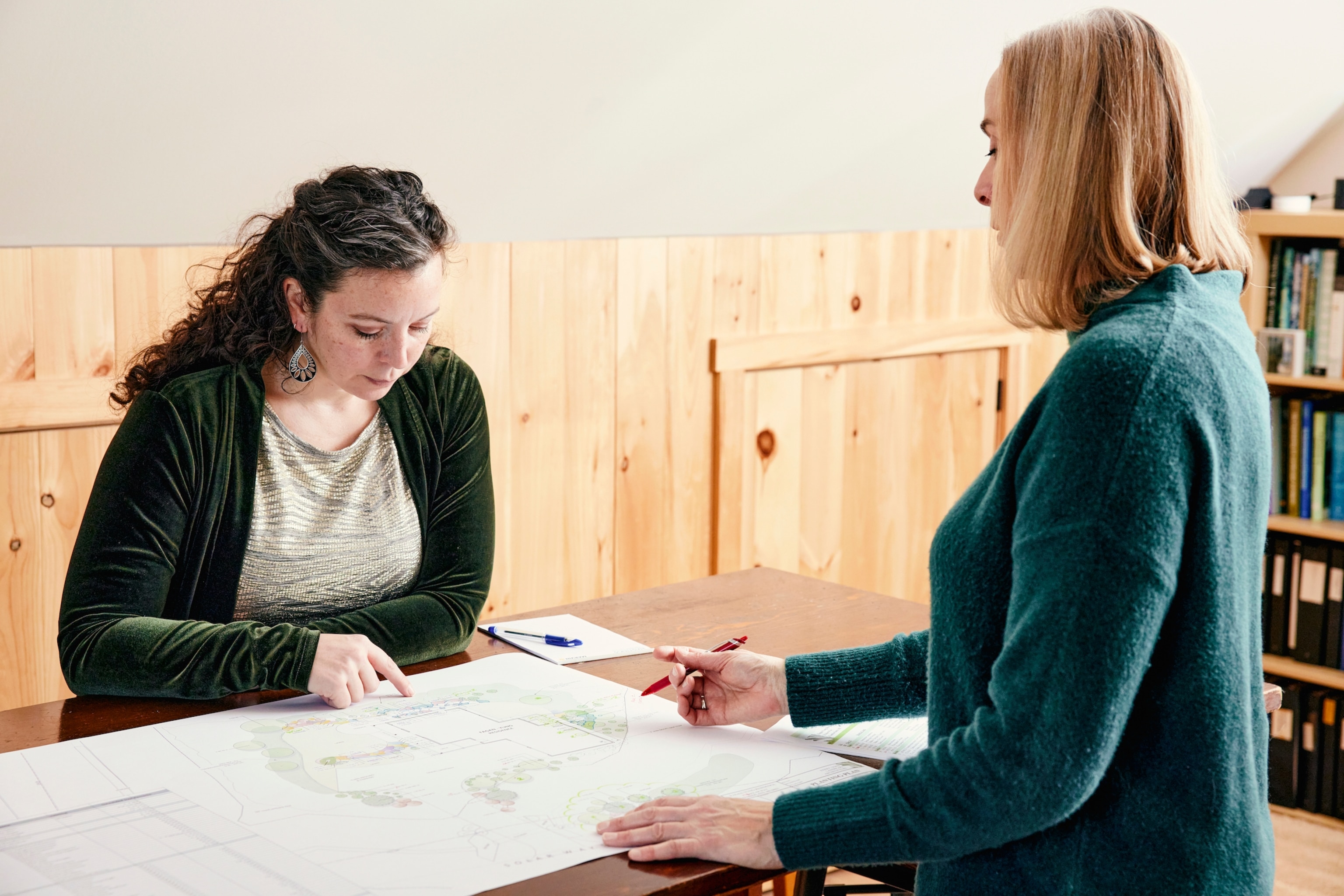
The everyday people making their homes climate-friendly
Whether building new, renovating, or switching out appliances, a new movement is catching on to create houses with low-to-zero carbon footprints.
On the coast of Maine in the U.S. northeast, Kristi Marsh follows her green building architect Emily Mottram through the empty rooms of Marsh’s newly built house. The pair carry a thermal scanner to detect where drafts might be coming in. It’s one of the last steps in completing this house with zero-net energy goals, which means that it combines renewable energy—solar, in this case—with energy efficiency to consume only as much energy as is generated on site. While it might sound intimidating to build a home with such goals, for Marsh, that’s part of the point. She’s not an energy expert. She has no construction experience. She wants to demonstrate that even for everyday people like her, building a climate-friendly home can be done affordably and simply.

That’s how she found Mottram, who’s also passionate about educating people on energy conservation. In addition to her architecture firm, Mottram teaches building science and sustainable design at a local community college and hosts a weekly podcast on energy efficiency.
“When you build new, people can lower their carbon impact from day one, because we focus on how carbon-negative those building materials can be right from the beginning,” Mottram says. “Then over the long term, they’ve reduced the operational energy of that home for the next hundred years and next several owners.”
Those individual choices in the home can certainly add up, because “in general, the use of energy in residential buildings ends up being one of the highest uses of energy on a national level,” says Greg Hoffart, founder of Tree Construction in Revelstoke, British Columbia, which focuses on building homes with environmentally sustainable designs and advanced technology. Currently, an estimated two-thirds of global emissions directly and indirectly result from household energy consumption. So it’s no surprise that, according to a 2020 report that screened nearly 7,000 studies worldwide, some of the top actions that people can take to slow climate change are centered in our homes: like using renewable energy for power, and renovation and refurbishment, including changing out energy-guzzling appliances for more efficient ones.


A few years ago, after her children left their childhood home in Boston for college, Marsh decided to downsize. She wanted her new home to be not just financially sustainable—she didn’t want to spend the rest of her life working to pay for electricity and gas bills—but also sustainable for the planet. Not to mention durable, as here in the U.S. northeast, a region already known for its hurricane season, storms are intensifying with the changing climate. “A lot of the choices I made weren’t for Kristi of the next two years, but for how I believe the world is going to be ten years from now,” she says.
Marsh’s home uses both new technology and long-established materials crucial to the circular economy. It’s built with double-stud walls, which slow heat loss better than single stud; and filled with cellulose insulation, which is just densely packed recycled newspaper. For heating and cooling, which accounts for nearly half the energy that average households consume, Marsh installed ductless mini-splint heat pumps, that transfer instead of generate heat and can use up to 60% less energy than standard electric radiators. When it came to appliances—in the U.S., appliance use accounts for 21% of household emissions—Mottram helped her choose an induction stove, which is three times more energy efficient than conventional gas cooktops.


“There’s no way for us to not consume energy,” says Mottram. “If we’re going to consume, we should make the best choices we financially can. If you can afford to buy a more efficient appliance, you should definitely do that.”
That goes beyond kitchen appliances to other rooms of the house, like home offices. Epson’s inkjet printers, for example, use Heat-Free Technology designed to use less energy compared to laser printers that use heat in the printing process. Newer ENERGY STAR-certified televisions can consume less wattage than older counterparts, and replacing old computers with newer U.S. Energy Star-certified devices could save greenhouse gas emissions “equivalent to more than those produced by 2.7 million cars.”.
Even just changing the way we use our current household appliances is an easy way to reduce energy use. Refrigerators can consume 6,240 watts of energy per day, but not overloading them and keeping the most-used items in accessible areas can cut down that number. Washers and dryers use about 13% of a home’s energy, which can be mitigated by washing full loads and using drying racks; in fact, air drying clothes reduces the average household’s carbon footprint by 2,400 pounds per year.
“If we can make even a one percent improvement in household energy consumption year over year, which is a substantial amount of total energy consumption, it’s enough to tip the scales in favor of combatting the greenhouse effect,” Hoffart says. That requires a movement, he acknowledges, “but change absolutely has to start with one.”
Ultimately, Marsh hopes to turn part of her net-zero energy home into a short-term rental. Leading by example is important to her—she’s cataloguing her building journey publicly on Instagram—but so is allowing people into the finished product. “The idea that makes me really excited is that those guests will experience it. Not just read about it, but experience the normalcy of all these things, and realize: this can be done.”



